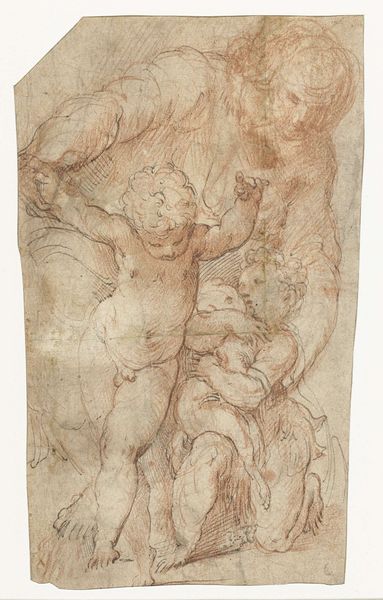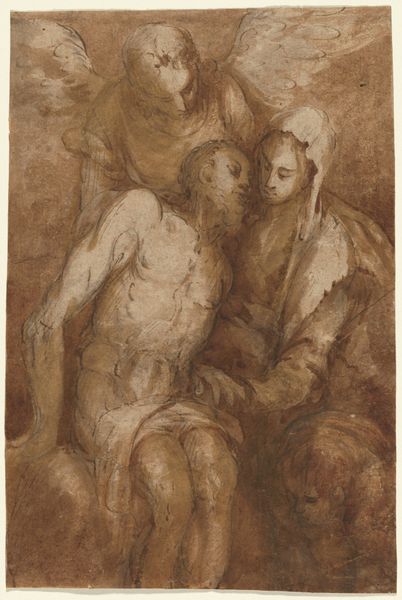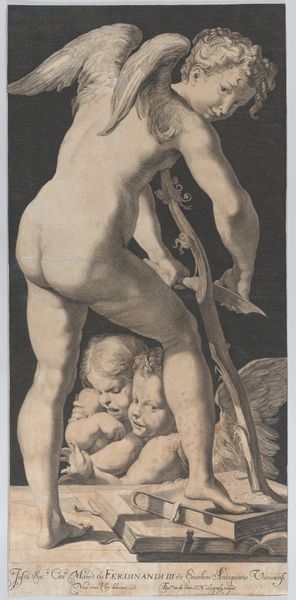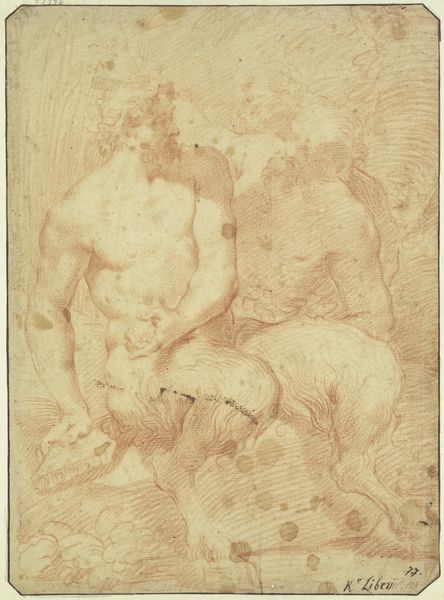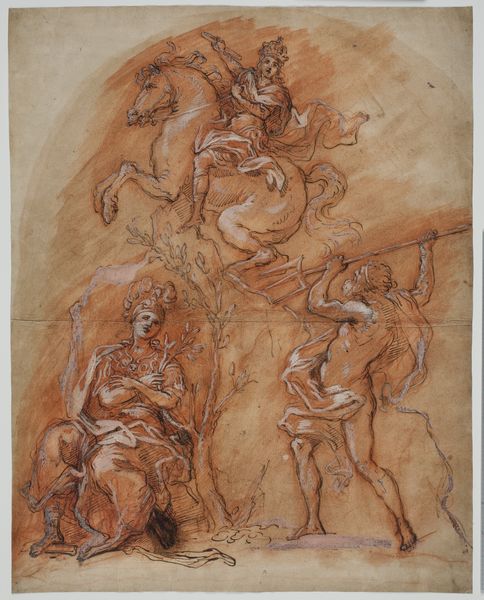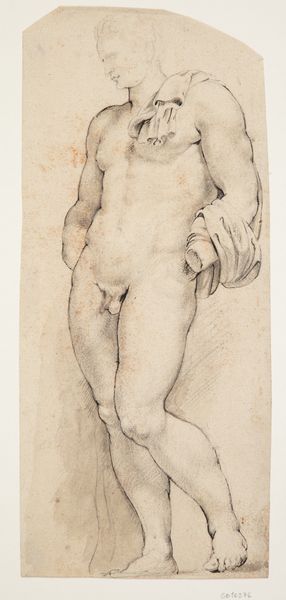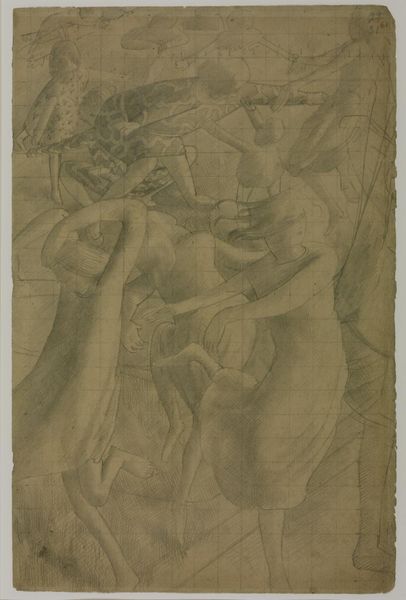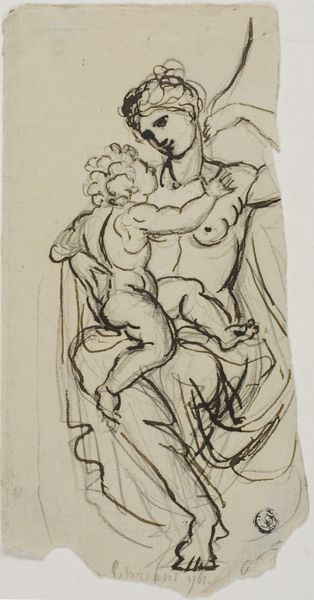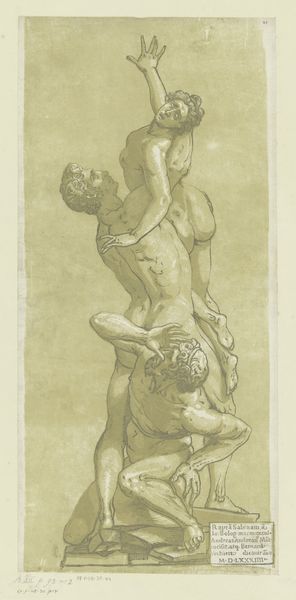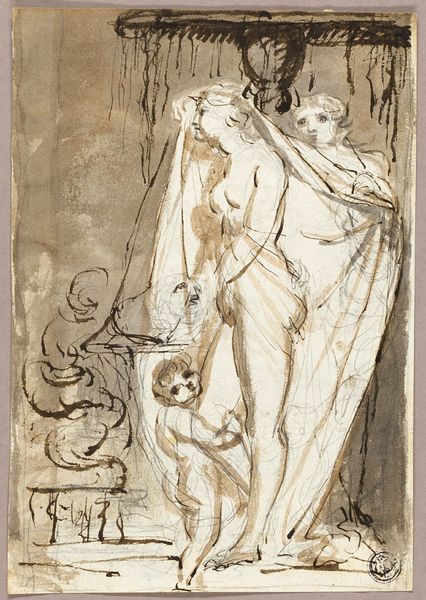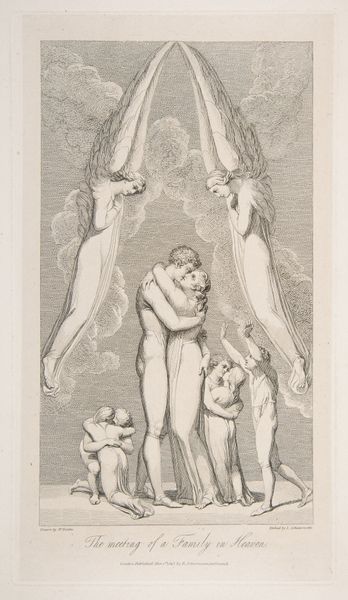
drawing, paper, ink
#
drawing
#
allegory
#
mannerism
#
paper
#
ink
#
coloured pencil
#
nude
Dimensions: overall: 19.2 x 14.6 cm (7 9/16 x 5 3/4 in.)
Copyright: National Gallery of Art: CC0 1.0
Curator: Here we have Joseph Heintz the Elder's drawing, "The Toilet of Venus," created around 1590. It's rendered in ink on paper, with touches of colored pencil. Editor: It strikes me as immediately tense. Despite the mythological subject, it's quite austere. Not the celebratory Venus one might expect, it’s like something's amiss, maybe even tragic. Curator: The allegory here feels weighty, not frivolous. Venus isn’t merely admiring her reflection. Her pose, almost hunched, her gaze directed downward... the presence of Cupid fiddling with books disrupts the typical idealized beauty associated with Venus. He represents desire or erotic love now tangled with learning. Editor: Absolutely. I'm fascinated by the physicality of the drawing itself. The crosshatching, the obvious effort of layering the ink... it feels labored. Look how much detail is given to the drapery. What kind of paper allowed for such depth of layering? There's such a contrast between the apparent cost and effort to make this, but, on what might have seemed like such throwaway subject. Curator: Considering Mannerism’s influence, it's a deliberate departure from High Renaissance ideals. The exaggerated musculature of Venus and Cupid’s form is also telling, indicating some of the shifting cultural values toward stronger figures who hold some power during that period. It presents a less sensual and more cerebral or powerful figure. The symbols here are loaded: Venus is about so much more than physical appearance alone. Editor: Yes, and that material tension reinforces it! Ink was costly but paper was ubiquitous, the labour of such depth can be argued to show Venus' human and godlike divide? Her struggles that, again, take her away from that standard image of divinity? The material tells an argument of internal and external struggle, the very making of the piece tells an emotional tale, an interesting technique and direction of art overall. Curator: I see the Mannerist tension reflected so well within your description itself! In essence, it compels us to contemplate not just the surface beauty, but the internal psychological dimensions within, something echoed across eras through Venus’s story. Editor: Indeed. It makes one wonder, with the obvious tensions around labour to portray this struggle that many seem to have during such changing times, where this artist thought he was headed with his career and output in those eras. A wonderful struggle caught forever in paper.
Comments
No comments
Be the first to comment and join the conversation on the ultimate creative platform.
